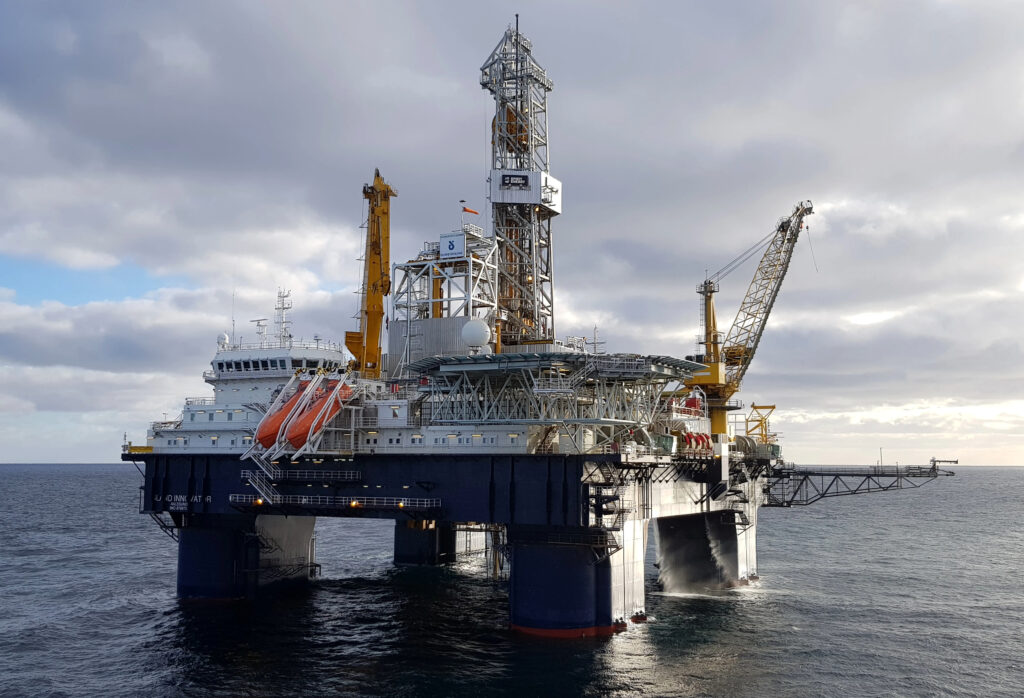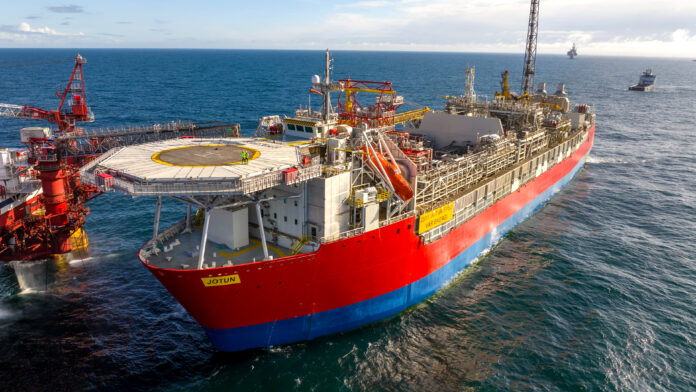Norway’s Tampnet is deploying private 5G, LEO satellite backhaul, and edge computing variously for Island Drilling’s semi-submersible rig and Vår Energi’s floating production unit (FPSO) in the North Sea – for industrial AI, digital twins, and safer offshore operations.
In sum – what to know:
Island Drilling – has recruited Tampnet to provide a managed private 5G network with hybrid LEO / LTE backhaul to an offshore drilling rig in the North Sea.
Vår Energi – has appointed Tampnet to deliver private 5G to a floating production storage and offloading unit (FPSO), called Jotun, in the North Sea.
Nokia and HPE – have been selected (as usual) by Tampnet for the 5G components; the firm has the biggest offshore private 5G footprint, plus fibre and LTE.
More from Norway-based private-networks specialist Tampnet, which has announced a five-year deal to deliver a “next-generation comms stack”, including private 5G from Nokia and HPE and low-earth-orbit (LEO) satellite back-haul with Starlink and OneWeb, for offshore contractor Island Drilling. Specifically, it is kitting out the Bergen-headquartered firm’s rugged semi-submersible offshore drilling rig, Island Innovator. Tampnet will supply the private network bundle as a managed service, integrated with its own multi-carrier LTE (T-FAST) microwave/fibre backbone network across the North Sea.
Separately, Tampnet is working with Norwegian oil and gas company Vår Energi to provide edge-based private 4G/5G networking and compute services to a floating production storage and offloading unit (FPSO) called Jotun, located in the Balder oil field on the Norwegian Continental Shelf (NCS). It called it the “first installation of its kind”, making Jotun the “first FPSO with full wireless coverage”. Again, the cellular components are from Nokia and HPE, for the RAN and core networks, respectively. The new FPSO comms setup is for higher-grade data processing, sensor integration, operational intelligence, and worker safety, it said.
Available since 2013, Island Drilling’s semi-sub Island Innovator rig is built for well drilling, intervention, and plugging services in rough weather conditions. It is deployed across the North Sea, Barents Sea, Mediterranean Sea, and the coast of West Africa. It features a 165 ton active heave compensated crane, and remotely operated vehicle (ROV) facilities for underwater work. Tampnet is managing the whole proposition via an “AI-driven orchestration layer” with “guaranteed SLAs and 24/7 network-operations centre (NOC) support”. It will provide “seamless mobility for people, sensors, drones, and robotics”; scheduled apps include digital twins, AR/VR, remote video, and voice/data.

The deployment will be fully operational before Island Innovator commences its next North Sea campaign in Q4 2025. Roger Simmons, chief executive at Island Drilling, said: “The Island Innovator operates in some of the world’s toughest conditions. Tampnet’s multi-layer network and private 5G capability will let our crews work smarter and safer while enabling our rig for the digital future.”
Trygve Hagevik, chief commercial officer at Tampnet, said: “A well-connected rig is no longer a nice-to-have; it is the backbone for remote operations and data-driven decision-making. By blending LEO, LTE and LOS/fibre with real-time AI traffic steering and [a] private network, we’re giving Island Drilling the performance and resilience it needs – plus the freedom to scale advanced use cases such as predictive maintenance, digital twins and autonomous inspections.”
Meanwhile, the connected-FPSO project with Vår Energi also includes fibre-backhaul to the Ringhorne wellhead platform in the Ringhorne Øst oil field in the North Sea. Vår Energi has a ‘digital field worker’ project to improve safety, efficiency, and data quality by connecting field workers on offshore installations with digital applications to cover 80 percent of their tasks – apparently. The scheme is implemented with Wi-Fi on the Goliat platform, with the Gjøa platform to follow; the company’s assets in the southern part of the North Sea, including Balder and Ringhorne, are now connected on private 4G/5G networks. The Jotun FPSO setup is part of the company’s “next digital phase”, said Tampnet.
Tampnet said in a statement: “The solution at Jotun includes dedicated cellular coverage, local compute power, and secure private network capabilities to support real-time communication, predictive maintenance, edge AI, remote assistance and more. The offshore environment presents unique challenges: steel structures block traditional Wi-Fi signals, latency can be critical, and safe operations depend on instant communication and data access. Private networks with edge computing solve this by enabling real-time data transfer from sensors and devices platform-wide.”
Per Atle Sørensen, vice president and head of its North Sea division, said: “This is a true industry-first, a digitally enabled FPSO with edge compute onboard. Vår Energi is raising the bar, and we’re proud to help them lead this transformation. This deployment showcases how combining connectivity and edge technology creates smarter, safer and more autonomous offshore operations.”
Last month, Tampnet announced a deal to deploy the world’s first fully autonomous private 5G and edge compute solution on an offshore production platform – for Norwegian oil exploration firm Aker BP, at the Edvard Grieg oil field on the Norwegian continental shelf. Its success has effectively green-lit further offshore 5G deployments for Aker BP at six other oil platforms, at least.

